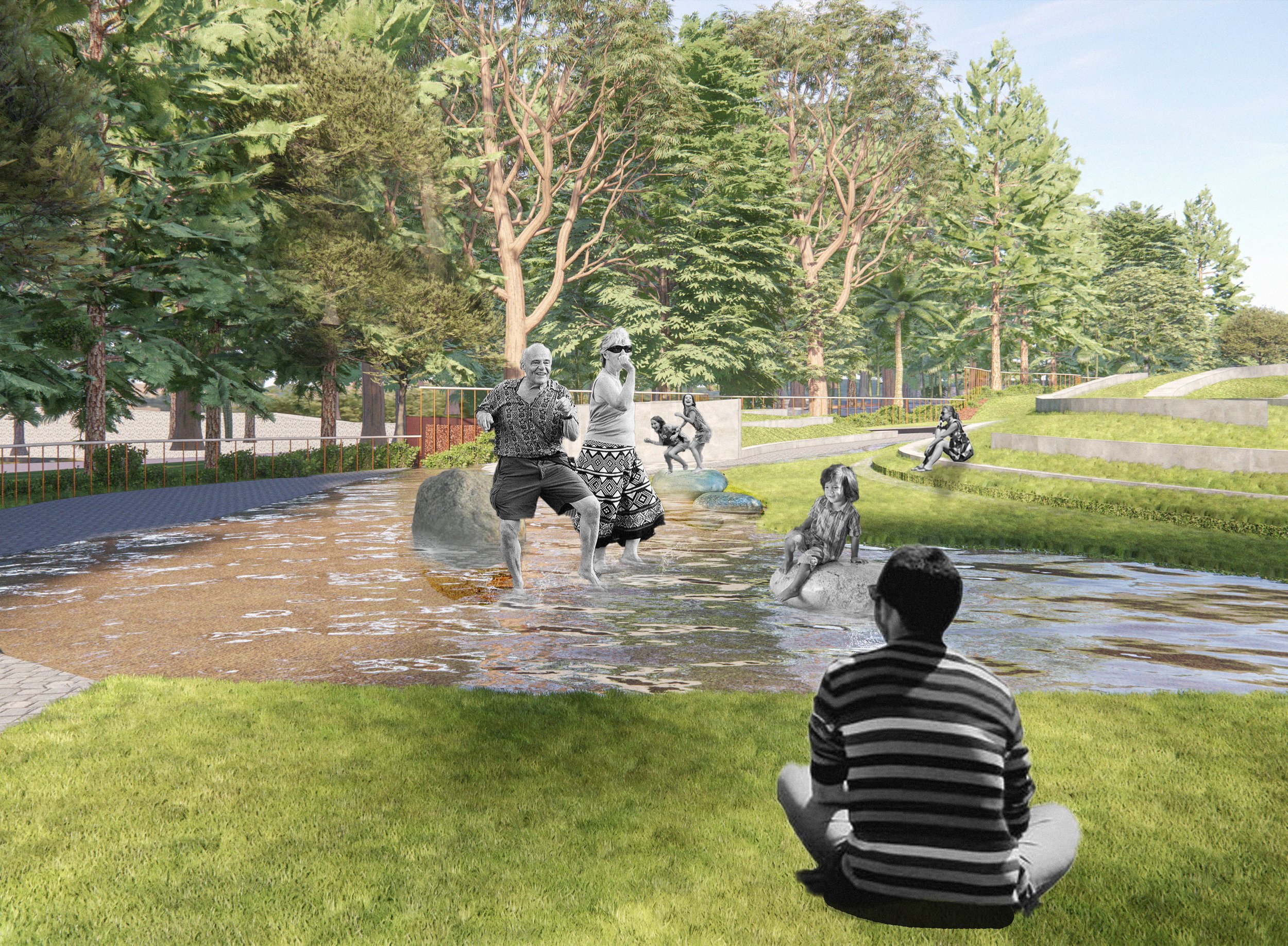urban catalyst
The design has chosen water because it acknowledges the connection of our community to water.
Adelaide was formed thanks to the River Torrens (Karrawirra Pari) and the Red Gum Forest River, where the river comprised large waterholes, serving as a crucial area for food and shelter for the Kaurna People.
The water feature will be an installation called 'The Water That Creates Us', signaling the start of a journey for the design.
Collaborated with Angela Liu, Lai Yin Chan and Nhi Trinh.
-
Along the flow, the design incorporates engravings and drawings as the water flow down the shallow water to portray the importance of water in Aboriginal culture, its role in identity, language, and law.
-
Cycle of Life: Colonial - Natural
-
Recognizing Kaurna people and Kaurna Land.

West Wing
Cycle of Life: Colonial - Natural
Formal to Informal
We transition from a colonial grid to a natural grid, creating a relaxed, adaptable urban space for the future Innovation Centre. Mixing organic and man-made layouts, our focus is on preserving playful patterns before returning to natural features in the East Wing. This design evolves over time, promoting tranquility and a deep connection with the city's heart.

East Wing
recognizing Kaurna people and kaurna Land
‘Kaurna meyunna, Kaurna yerta tampendi‘
By embracing and enriching the existing Adelaide Kaurna Walking Trail and integrating future elements, we can strengthen the sense of place within our urban landscape. This initiative not only serves to educate and engage communities in local history but also fosters the development of a shared cultural identity and collective memory, weaving the rich story of our past and the promise of the future into the fabric of our urban planning endeavors.

the water that creates us
The inclusion of outdoor seating for ceremonies and storytelling by the water, allow Elders leads to impart their people's lore, spiritual beliefs, and survival skills to the next generation.
This initiative not only serves to educate and engage communities in local history but also fosters the development of a shared cultural identity and collective memory, weaving the rich story of our past and the promise of the future into the fabric of our urban planning endeavors.
This design evolves over time, promoting tranquility and a deep connection with the city's heart.
